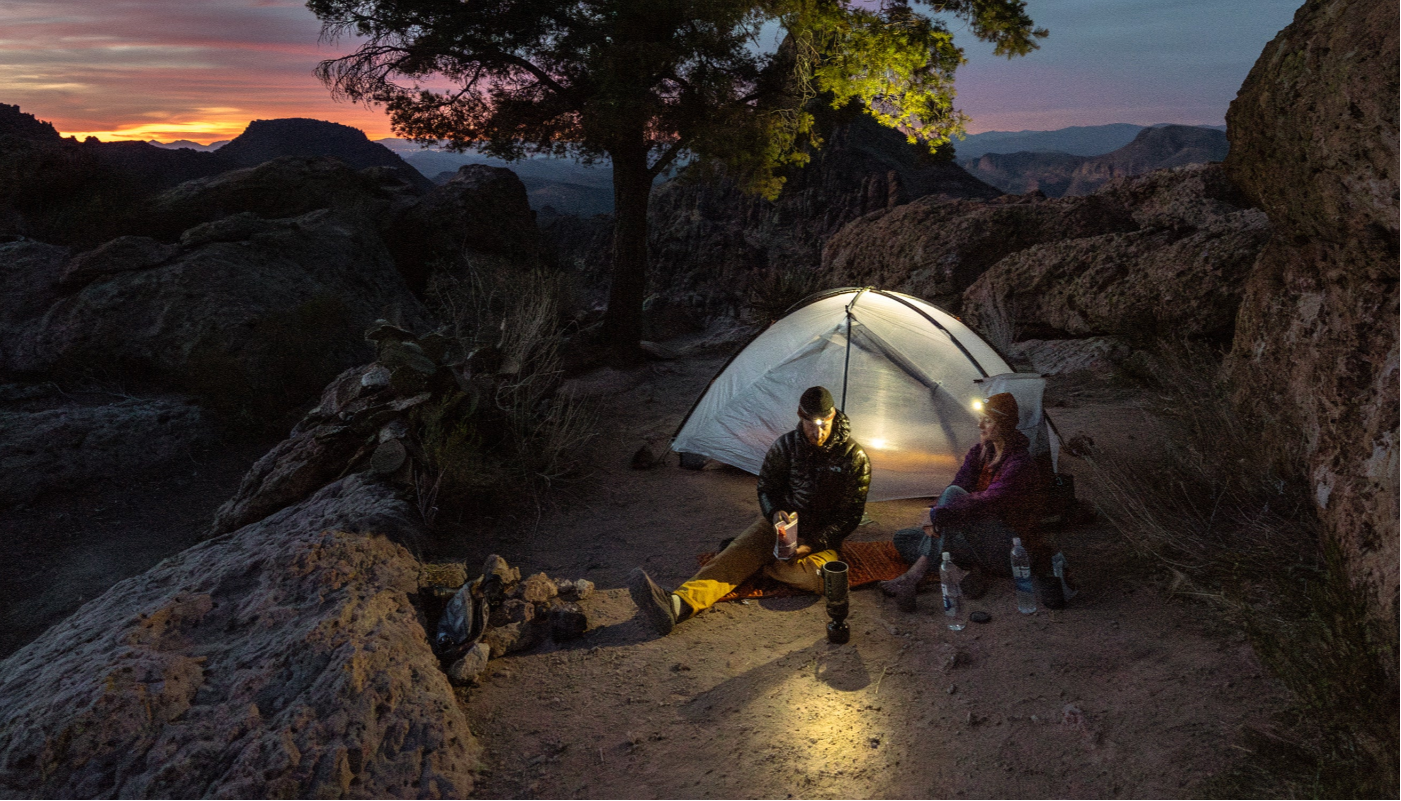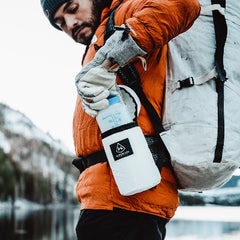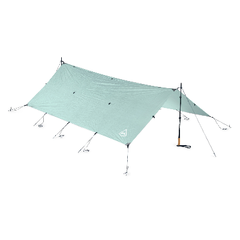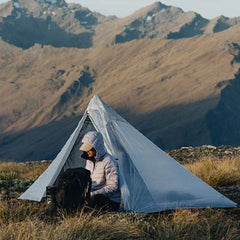Words & Photos by Mike Curiak
An Alaskan coastal traverse between Cordova and Icy Bay, Alaska using fatbikes, packrafts, and inspiration from those whom came before.
(Continued from Part 1)
Day Four:
Waking to the sound of rain wasn’t what I’d dreamed about. Although honestly, at first, I wasn’t sure that was even what it was. The optimist in my drybag hoped that it was Doom, just outside, slinging handfuls of sand at our tent while taking a selfie and mouthing ‘perf!’ at the camera. Once I scraped the crusted sand from my eyes and focused, I could see a million+ droplets beaded up on the outer skin of our ‘mid, a few hundred of them sliding earthward. Going to be a wet one.

Two men cooking breakfast, getting dressed and prepping bikepacking gear inside of a 2-man ‘mid is a process, one which requires coordination, consideration, and proprioception. The space is so confined and your gear so strewn that you need to think each movement through in advance, lest you find an elbow in your eye or dip a foot into your tentmate’s soup. That process was one level more delicate on this morning, owing to condensation on the inner walls of the tent which rained down onto us each time we bumped a wall or the center pole.
We bade farewell to Brad and John and rode out into the drizzle, which initially wasn’t as bad as it had sounded inside the tent. Rounding a point of land soon after starting brought us face-on to the oncoming wind, driving rain straight down on our noses. Already thin conversation grew yet more scarce as we burrowed inside of hoods and kept our heads tipped down to ease the sting.
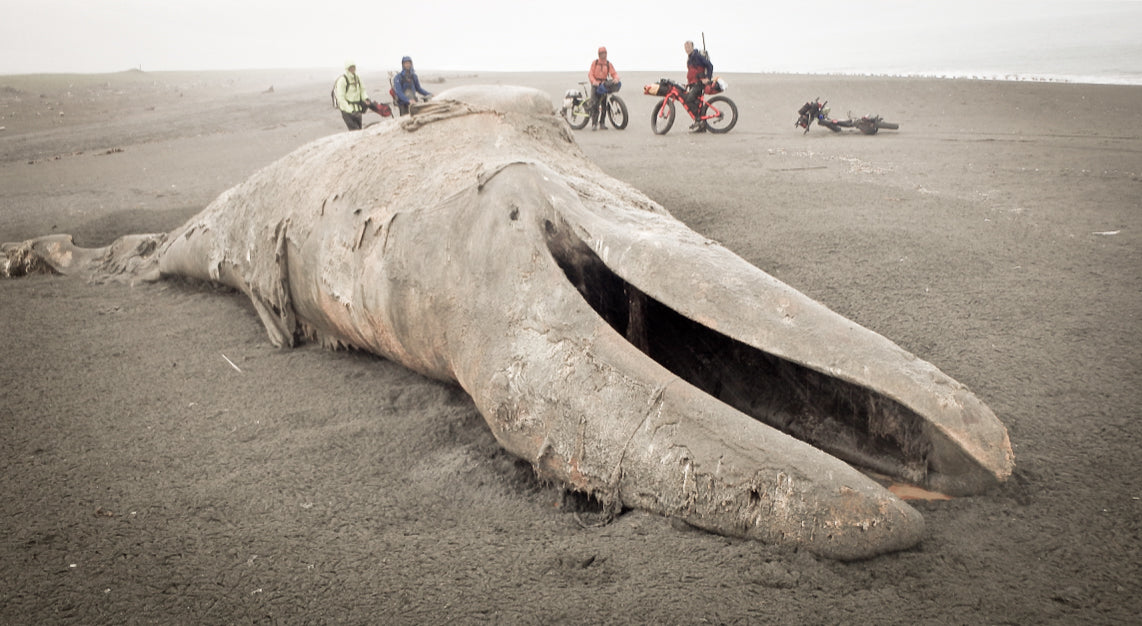
I’d love to wax poetic here, spinning yarns about how the adverse conditions made us stronger, or forged a bond, maybe increased camaraderie. Probably all of that did happen. What stands out about the day, now, is that the sand was soft, the beach was steep, the rain and wind relentless. We had to grovel at the very edge of the crashing waves to find a barely rideable surface, which meant that every few minutes one would dump right there and engulf our feet, chilling us yet more.


Then we rounded a corner and saw this big blue marble standing sentinel at the mouth of the Seal River. In bright sun or even heavy overcast I could have found limitless angles to explore and shoot here. From within the heavy downpour we had, I fired off a few from-the-hip bursts with my gutless point and shoot and kept moving.
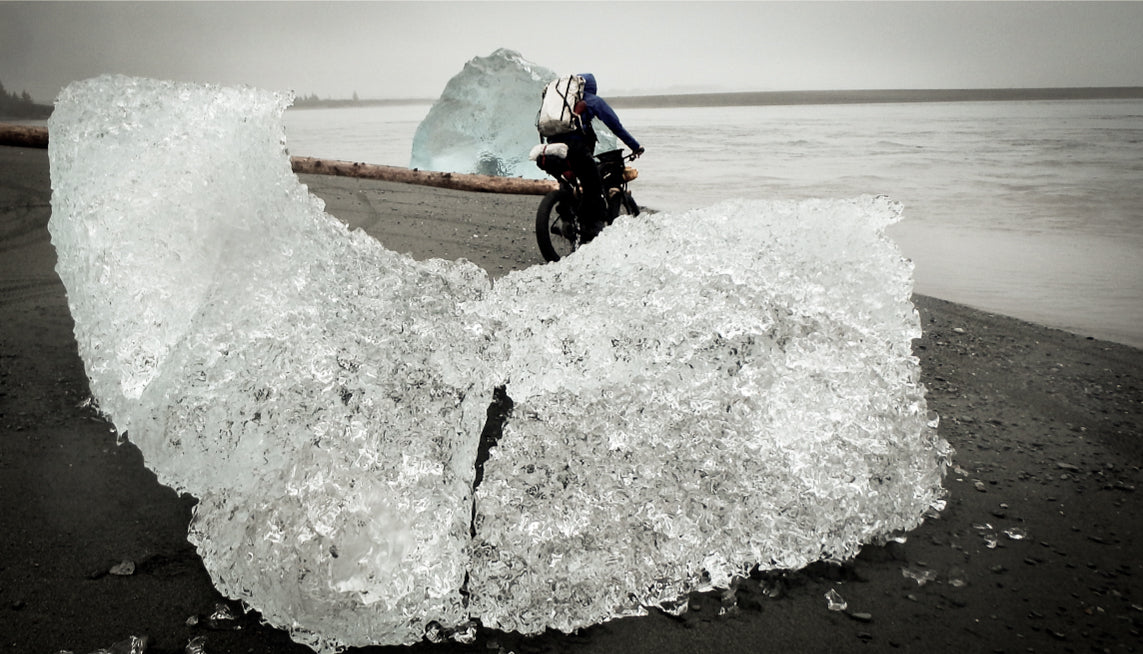
The Seal flows out of the Bering Glacier, carrying many thousands of cubic feet of water per second, with a few hundred cubic feet of ice floating, sloshing, and fizzing along within that current. I may have been colder at some point on this trip, but I really can’t remember when.
A slack current on the put-in side of this crossing lulled me into thinking it would be easy. That current increased imperceptibly, likely with each paddle stroke, until I suddenly became aware that my ferry angle and speed were insufficient to miss a grounded many-ton iceberg near my hoped-for landing. I paused two beats then dove for the eddy behind it, amazed at its size and the power of the current whipping me past it. And then I was almost upside down as the slack water of the eddy spun me around and pulled my unstrapped bike most of the way off the deck.
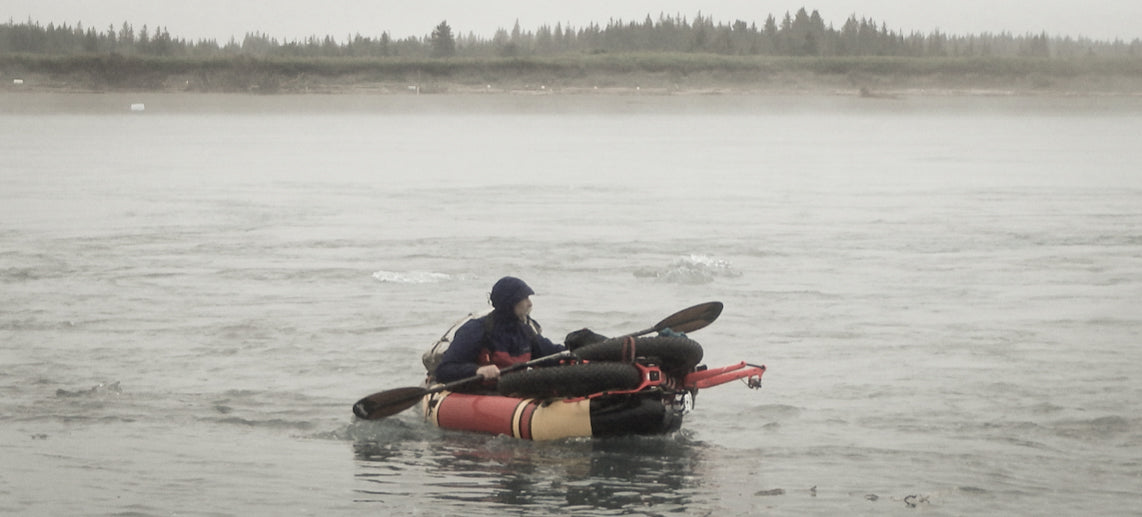
We packed the rafts haphazardly after the Seal, fingers too leaden to manage delicate tasks, cores too cold to care. Popping over the dune line and back to the outer coast we nodded in amazement and appreciation as the temps instantly climbed an easy 10 degrees relative to the cold-hole of the Seal behind us. Not to say it was warm…
I have no recollection of sunshine on this day. I do remember being intensely grateful for the moments when either the rain or the wind (but rarely both) lulled.
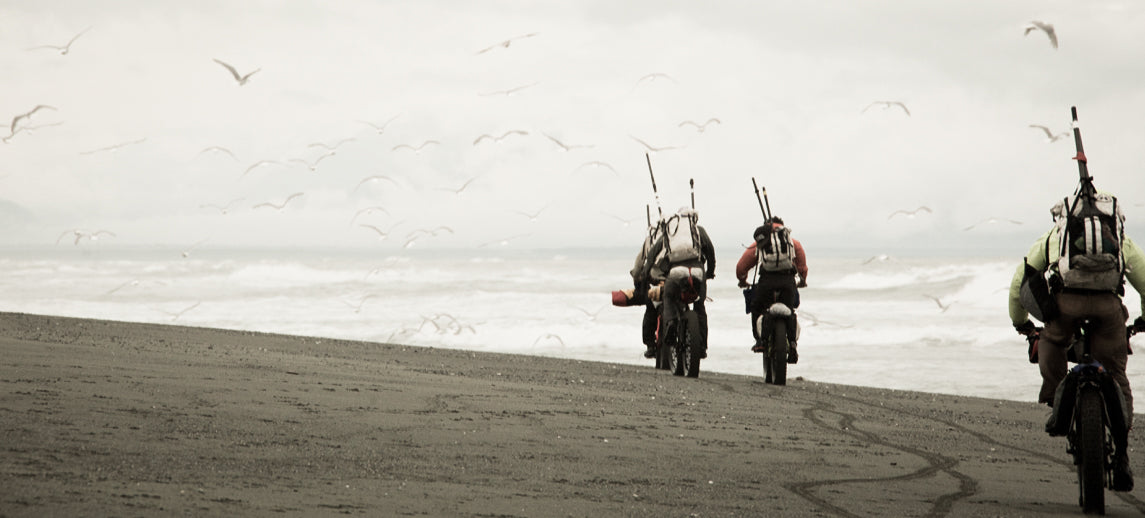
After our third or fourth lunch-and-bootstrap break we found engaging riding high against the dune line, but it didn’t last long enough — maybe 10 minutes — before we got squeezed back onto the apron at waters edge. More groveling.
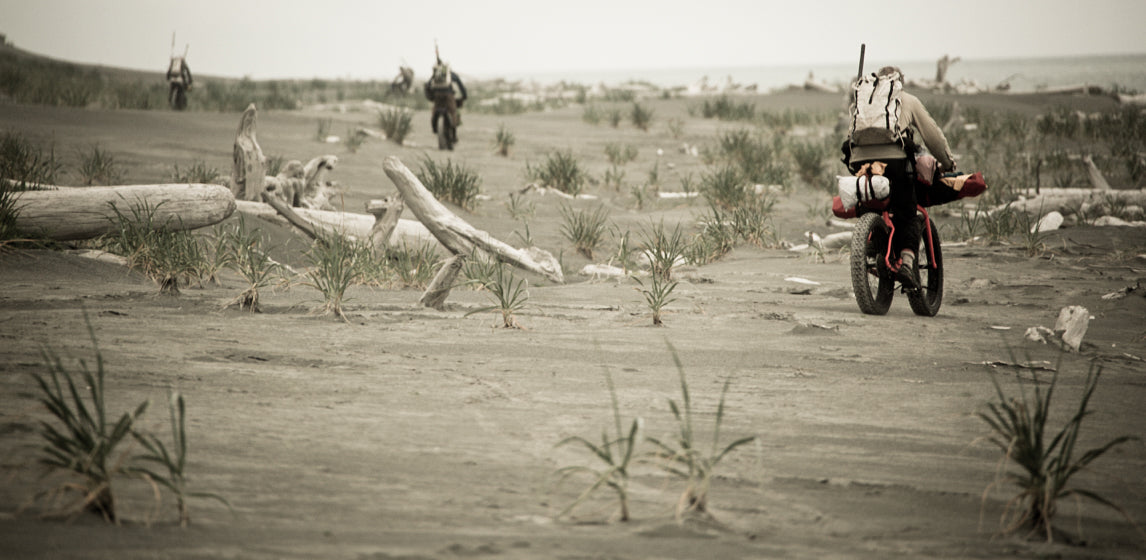
At the mouth of the Kaliakh River we stopped to admire dozens of seals sliding down the bank and into current to escape the predators (us) they saw approaching. We didn’t cross the Kaliakh until the next morning. Perhaps we didn’t want to disturb the seals any further. Perhaps. More likely we’d just run out of gumption for the day, so when someone suggested climbing up into the dune to camp we all moved that way without another word.
Day Five:
The breeze and drizzle stayed consistent through the night, making for unsettled sleeping and one big, wet, psychological hurdle in getting dressed the next morning.
Once we’d rolled out to meet the day we found the seals back in their favorite spot, leery as ever but seemingly disinclined to move.

A quick ride to where the bluff shut things down, then a quicker paddle saw us across the high volume but very flat Kaliakh.


Moody low-ceiling light ushered us across this vast mirrored flat toward looming peaks, bulging glaciers, and one massive distraction of a relic being reclaimed by the earth.
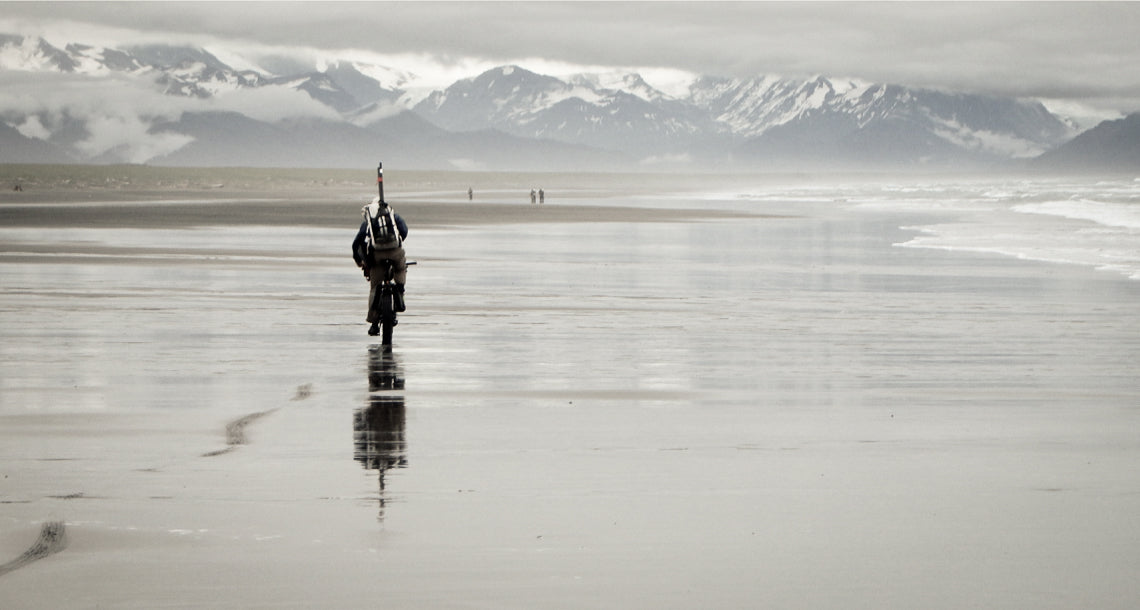
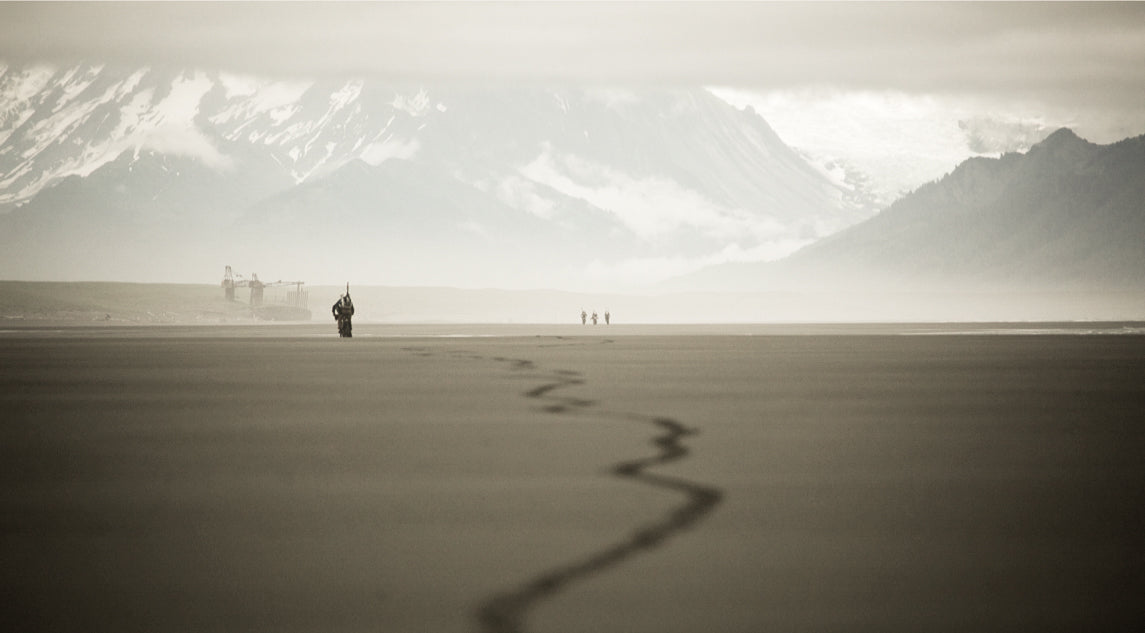
A balls-deep crossing somewhere just south of the Yakataga River. First few steps felt fine, then the subsurface crust got thinner, started to feel like sodden cardboard, and then we were wallowing ankle deep in muck, with current complicating each footfall.

We’d had an air service fly a food/fuel drop to the Yakataga grass airstrip. I’d been against it on general principle, arguing that we could easily carry the ~9 days of food we’d need. But Jaybs tight schedule meant that any time we could save by not schlepping added mass might make the difference in him getting out on time, so I’d grudgingly agreed. Diving in to our stashes of freshies felt like christmas, and I felt silly for not getting behind the plan from the start.
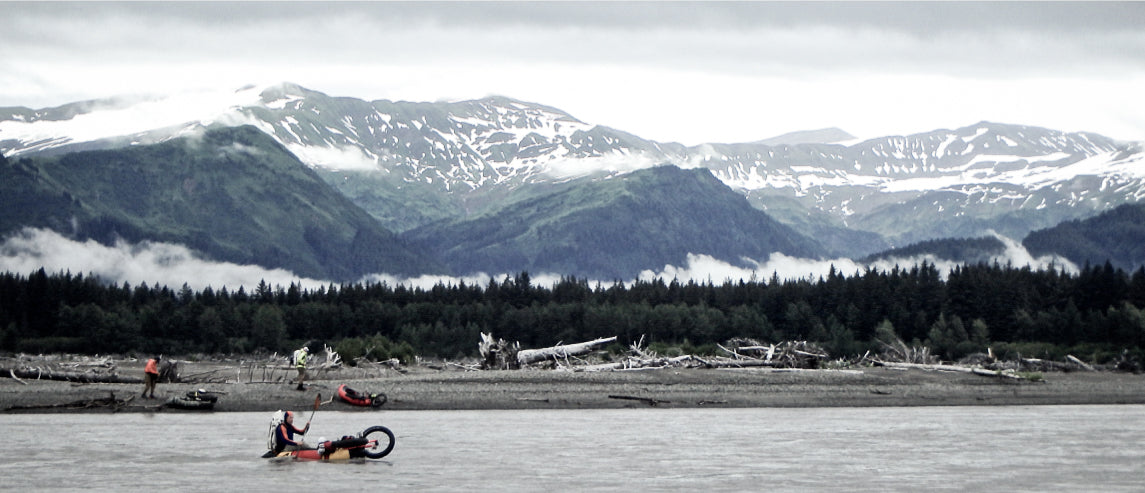
As part of his unprecedented and unrepeatable-for-mortals-or-anyone-else tour of Alaska in 2010, Andrew Skurka had walked this stretch of coast, and afterward had shared his annotated maps with Roman. Knowing how tight our timetable was, and seeing notes from Skurka indicating a road connecting Yakataga and Icy Bay, we’d collectively agreed that that was the route we needed to follow. Perhaps the speed achieved on that hard-surfaced route would buy back some of the time we’d lost early on.
Thus we followed that constantly devolving road out of Yakataga, made a wrong turn, did some backtracking, eventually pushed out to the beach when the “road” became more akin to a bear trail, and the saturated vegetation lining it became akin to riding, slowly, through a pressurized drive-through carwash.
We were soaked to the skin even wearing full raingear, and then it *really* started to rain. The afternoon passed quickly as we alternated between riding soft, fluffy beach sand into a headwind with driving rain, and stumblefucking up into the jungle in search of Skurka’s yellow brick road.
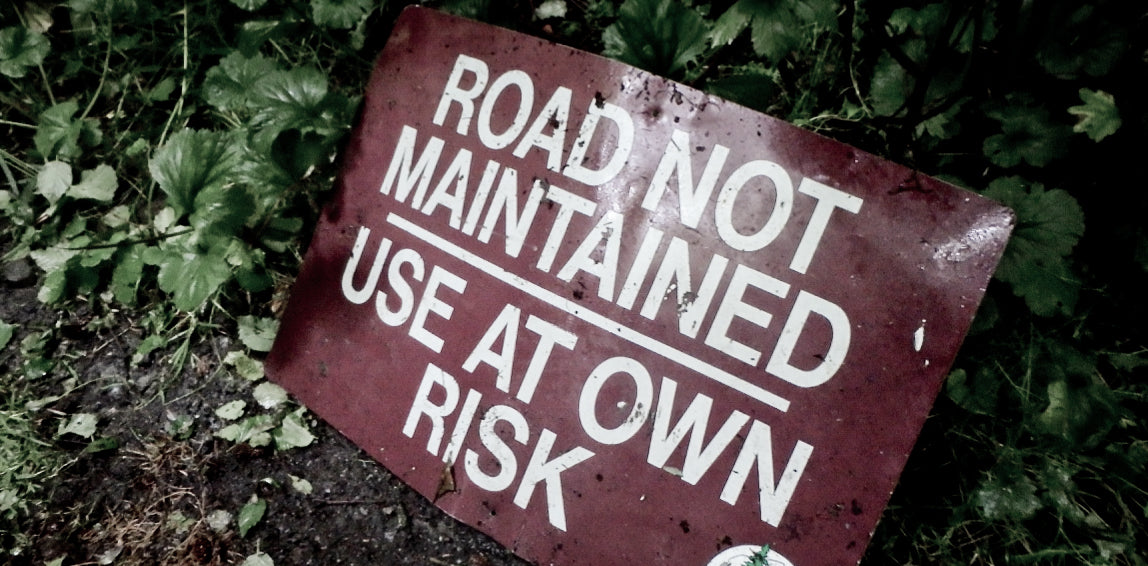
Each time some semblance of the road was there, but underneath and overgrown by the rainforest. Essentially reclaimed by the earth. After much effort to cover little distance, we cut our losses at the edge of the White River, threw up tents, wiggled out of sodden clothes, climbed into sleeping bags. We brewed up dinner while poring over maps both real and imagined, wondering if the ‘road’ we’d found was the same as Skurka had hauled ass along. Wondering if we should have just skipped it from the outset and ridden the slow-as beach. Wondering if it would ever stop raining.
Day Six:
Drizzle continued off and mostly on throughout the night. When said drizzle ended it was replaced by heavy rain. Each time I stirred to shift or shiver my ear was bent outward in hopes of hearing silence replacing the drum of rain on tent skin. That wish never was granted.When finally we had to rouse and move, we ate quickly, packed without much conversation, savored what there was to see while it was there to be seen. Low cloud, fog, and rain obscured many of our views on this day.
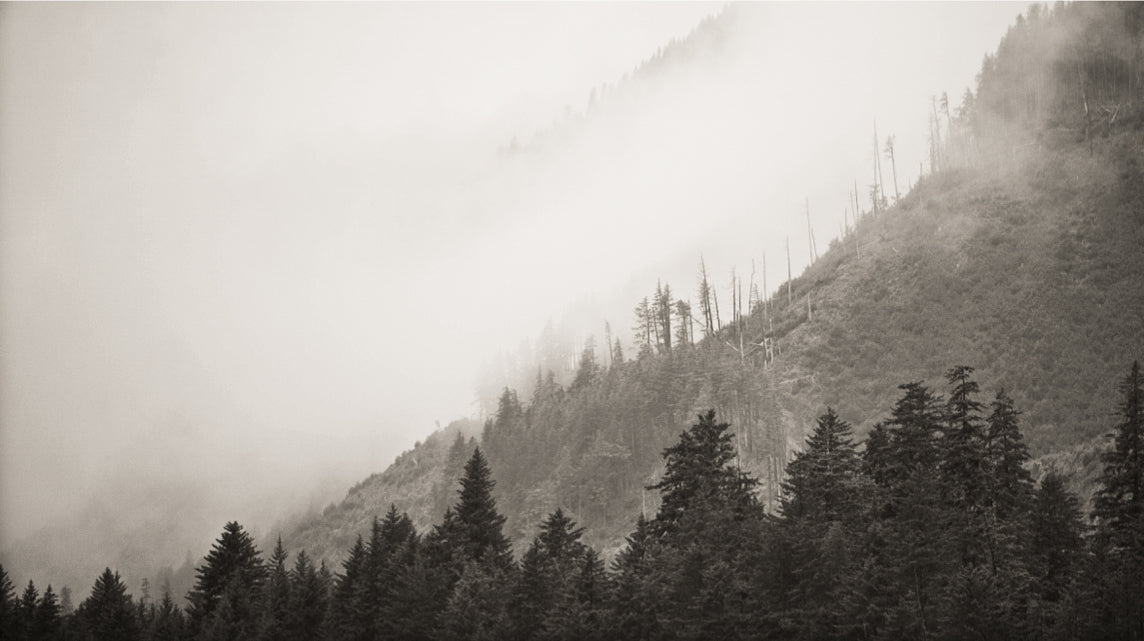
First order of business was to cross the White, which Jaybs got to do 3 times after forgetting a critical piece of clothing at camp.
Slack tide beyond gave us a wide berth within which to choose lines. All of them were wet, and most had been fluffed by the constant deluge.

The rain had the added effect of coloring all of the creeks we crossed, not just the glacial ones.
So what? The flavor didn’t really change, but the texture of the water we drank sure did. Good for our gizzards, is what I told myself.
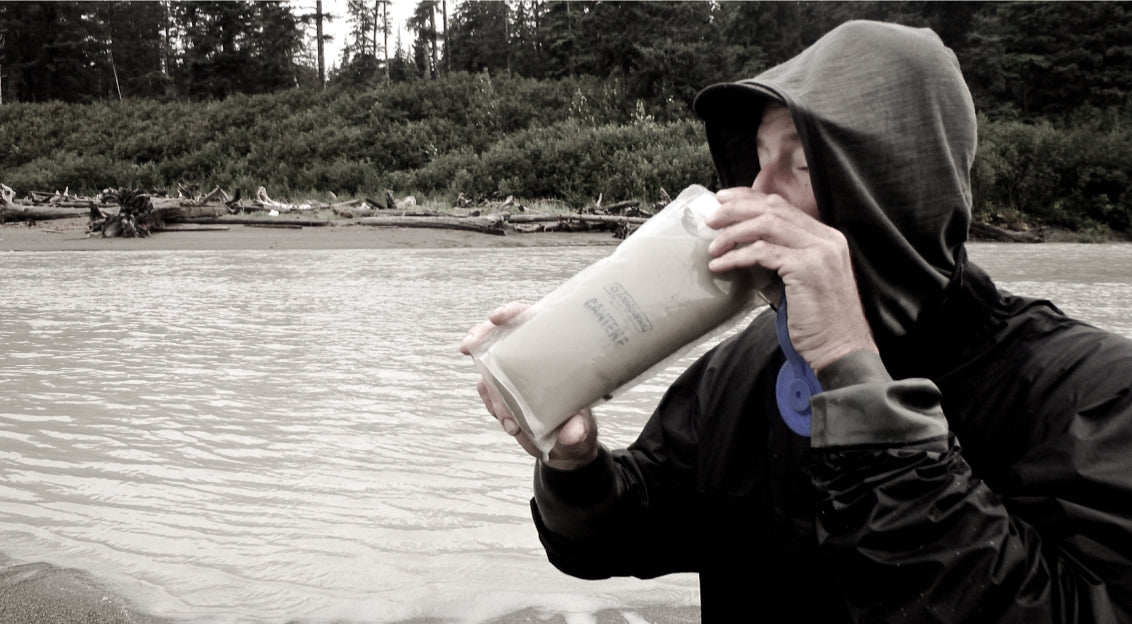
We’d all noticed an increase in the number of full-sized trees washed up at high tide, but somewhere near Big Sandy they became impossible to ignore. We advanced and debated theories on why so many, here, now, but couldn’t come to agreement.

Our arrival at the Big River crossing coincided with possibly the heaviest rain of the day, as well as high tide. What we found there wasn’t just terrifying, it was a complete deal-breaker where further forward progress was concerned. Heavy current plowed straight into ocean swells, while carrying whole trees along for the ride. Not just tree skeletons as seen above and below, but whole living-minutes-ago trees with full crowns of leaves and branches, and massive gnarly rootballs plowing wholesale into each other, tearing hell out of the bank, the bottom, and everything else along the way. It was impossible to slip past them, impossible to even find a safe place to blow up boats within proximity of the carnage. So we retreated to a place where we might safely wait for low tide and hoped for a change in circumstances.

This few-hour long break did nothing to increase our chances of success at getting Jaybs out on time. But it somehow coincided with a brief break in precip, allowing us to dry out clothing, tents, sleeping bags, cameras and lenses and camera bags, build a fire, eat a meal, even catnap for a few.
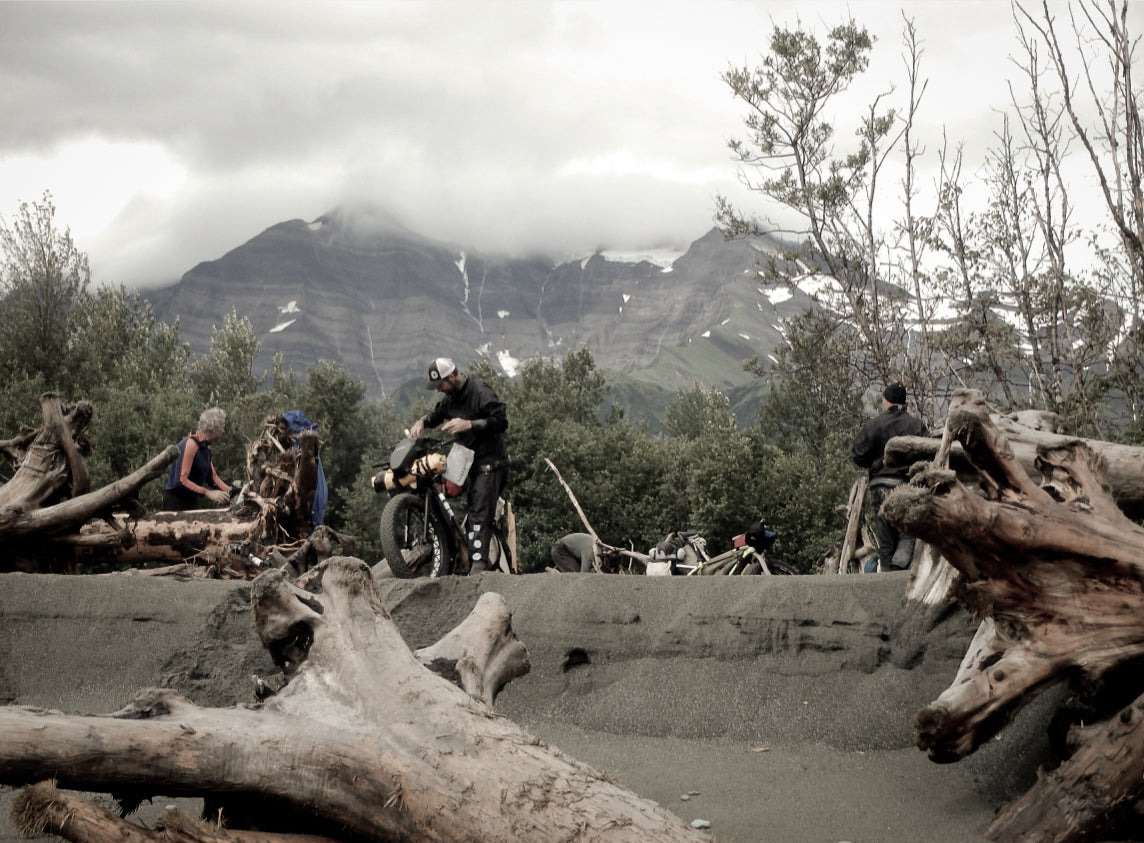
In that sense it was priceless. Possibly the biggest, luckiest break we got the whole trip.
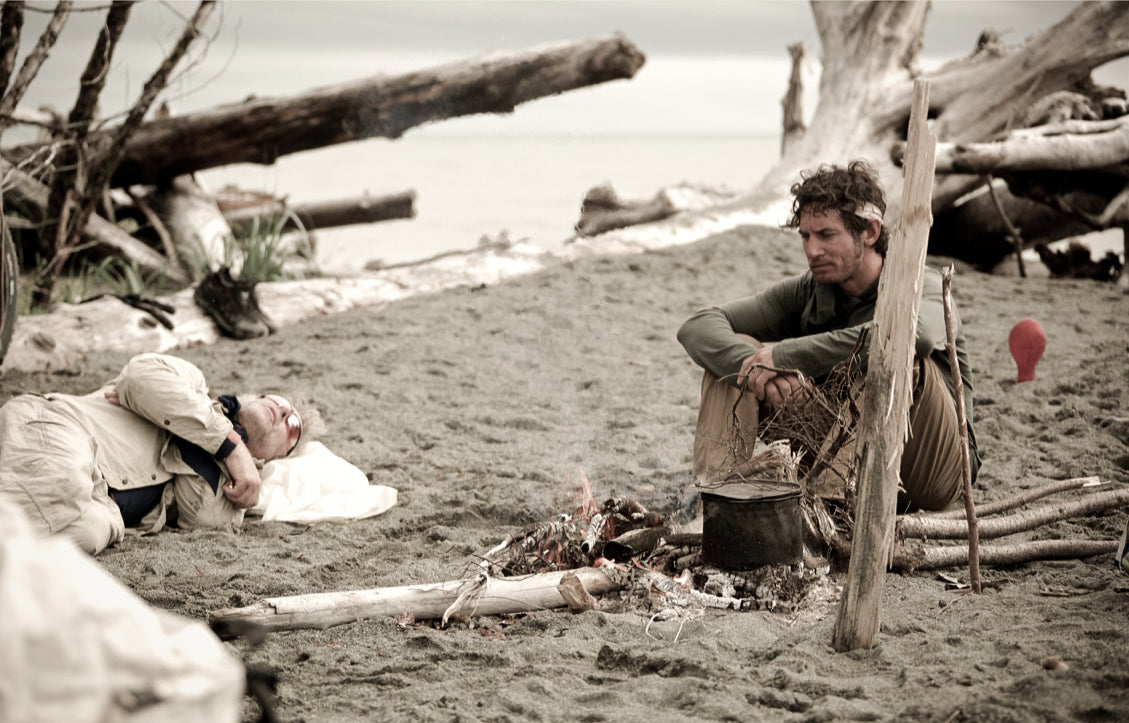
Gear re-stashed and attitudes adjusted, at low tide we rolled back down and found a much different scene. The ocean was no longer damming up the river, which meant the river lost it’s steam before entering the surf. Specifically, this meant that the massive trees were grounding out just before they reached us, so that we’d only have fast current into breakers to contend with. It was spicy but doable, and as exclamation point to achieving the delayed-gratification crossing we were rewarded with a few moments of honey light and atmospheric surf-spray while watching gulls get tubed.
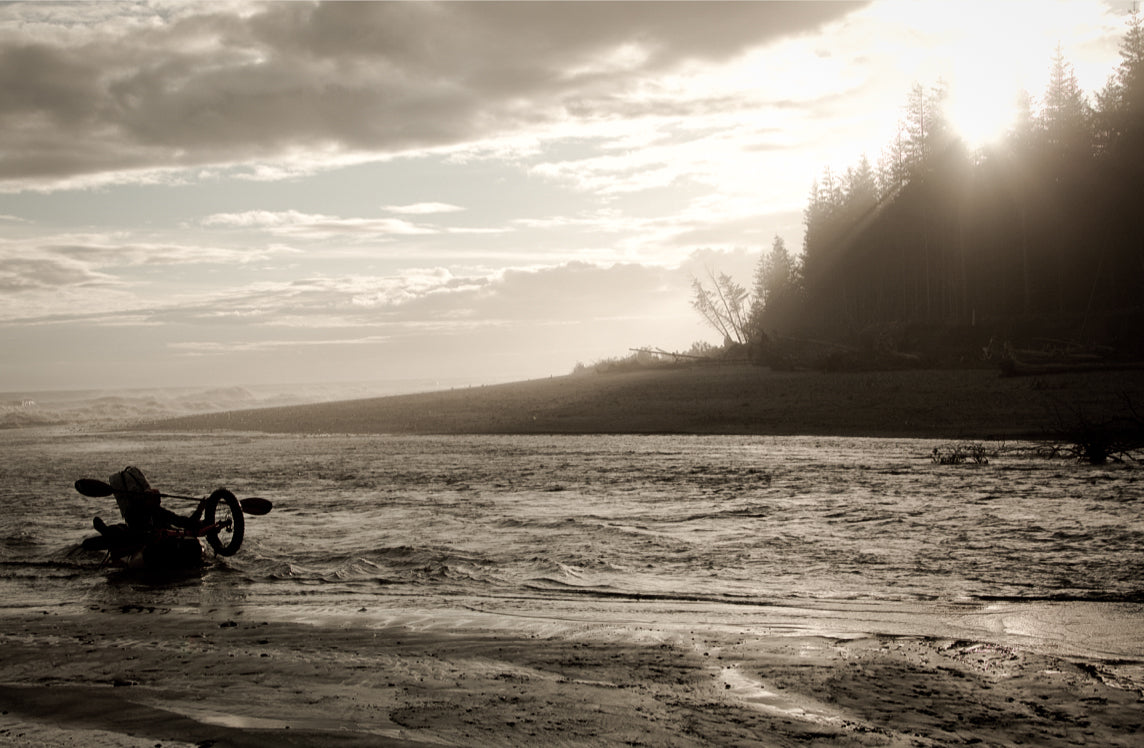
Moments after the Big crossing sun was replaced by cloud, laughter by apprehension, dead tree skeletons by live ones hanging by a thread from a 40′ bluff being pounded relentlessly by waves for ~half of every day. It seemed we’d found the source.
Waiting to cross the Big at low tide gifted us the ability to skirt Icy Cape on the same low. The riding was good, buoyed by adrenaline and the realization of how much carnage was happening a few hours before, and coming again a few hours later.
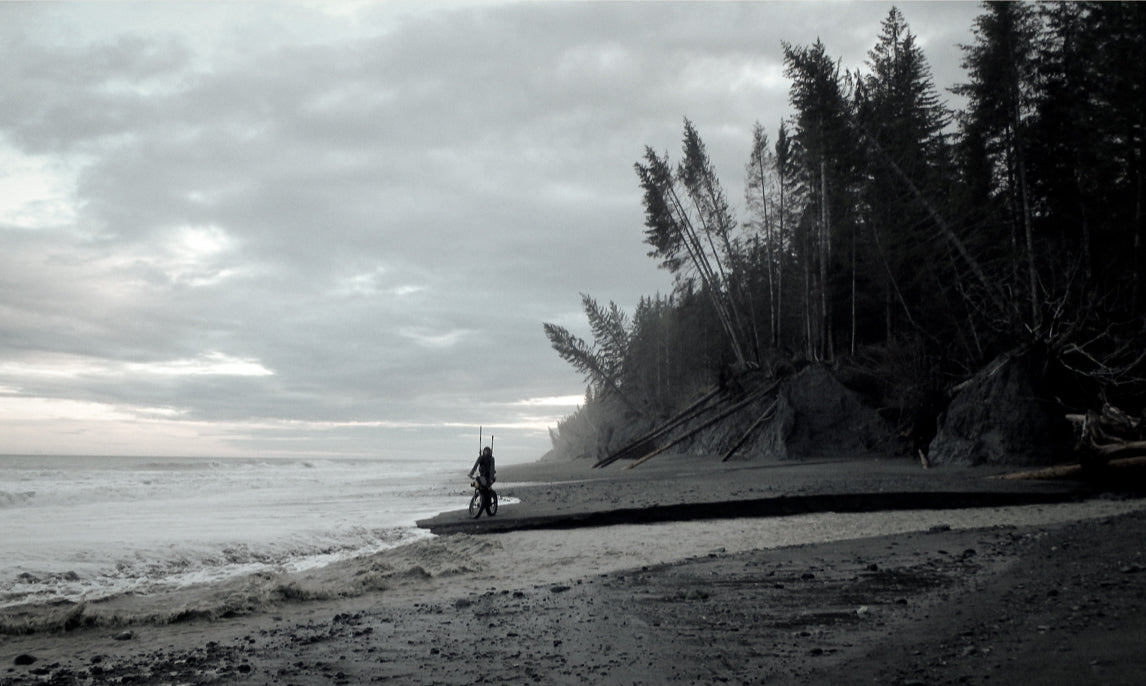
We concluded our lengthy day with a few miles of high-speed doubletrack and some great beach riding to camp at the cusp of our next obstacle: Crossing Icy Bay.

Day Seven:
3 layers of white noise facilitated good sleep in this spot: a cascading waterfall, small waves shushing into the sand, and the ever-present pattering of precip on the walls of our tents.No surprise then that Roman and I were oblivious to the curious bear that approached as we sawed logs.
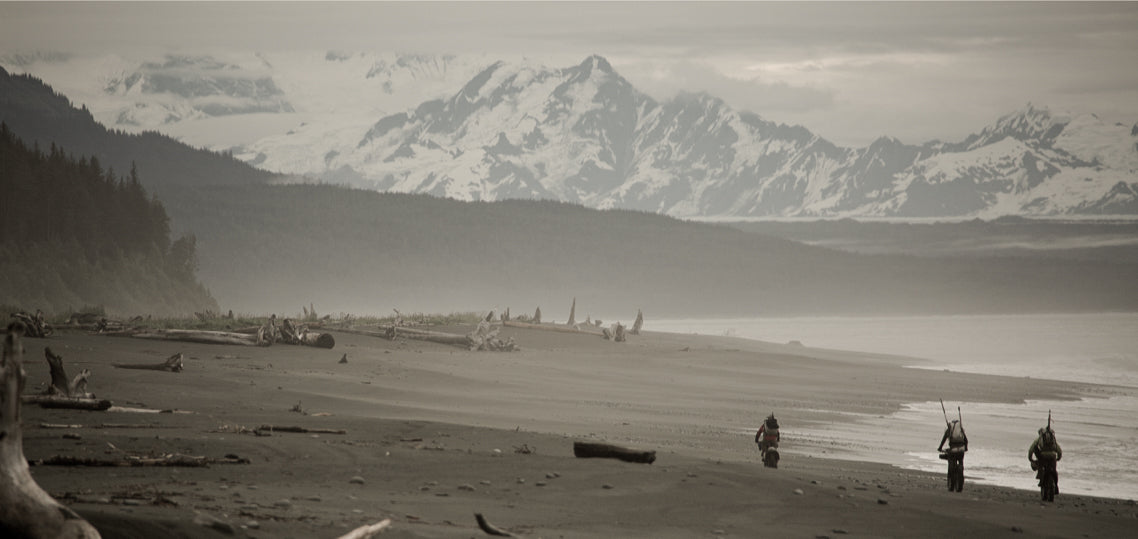
Up and moving, we were giddy at the thought of finally crossing the vastness of Icy Bay to reach the Malaspina glacier on the other side. Massive bonus that not only was the rain tempora
